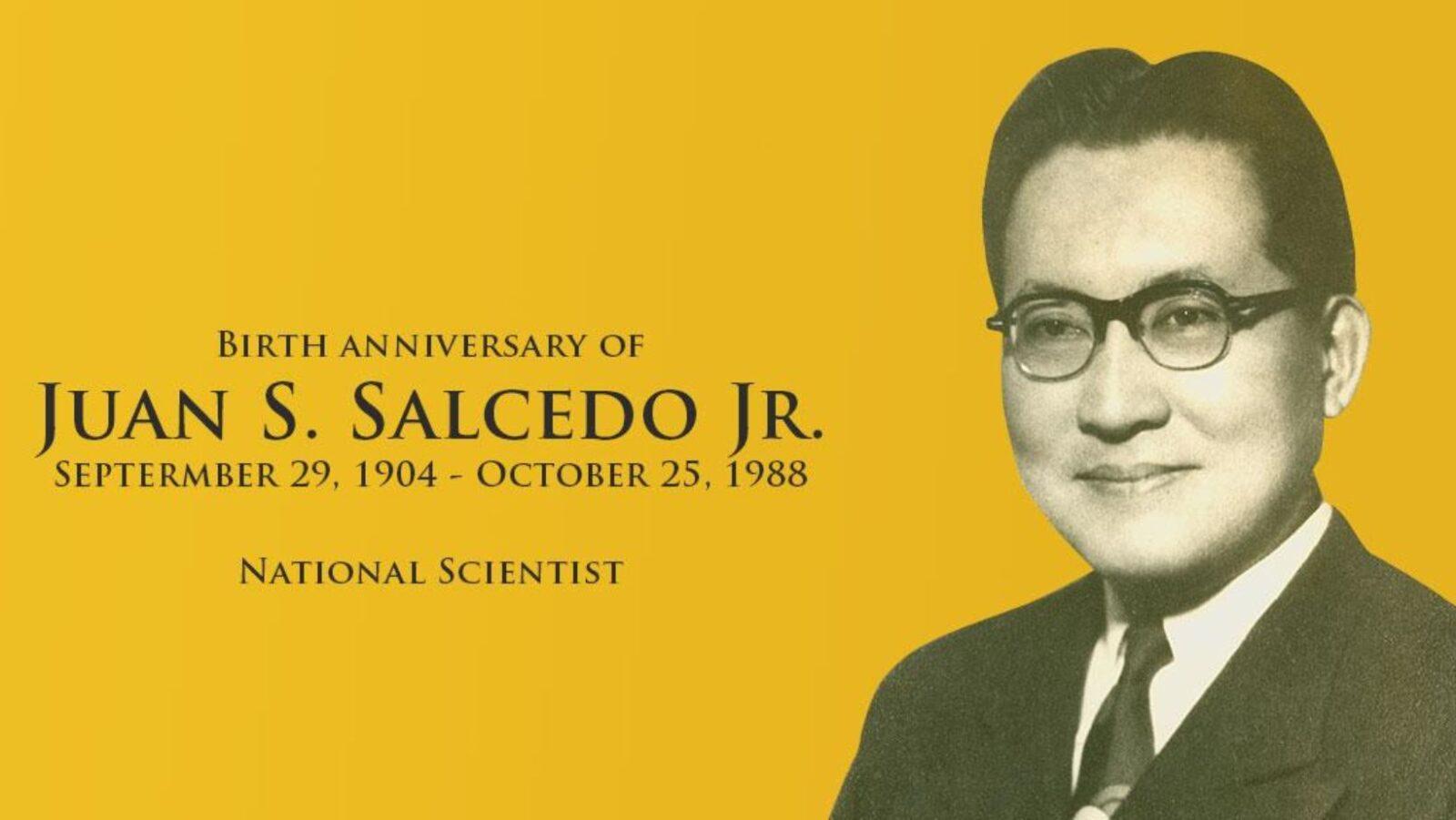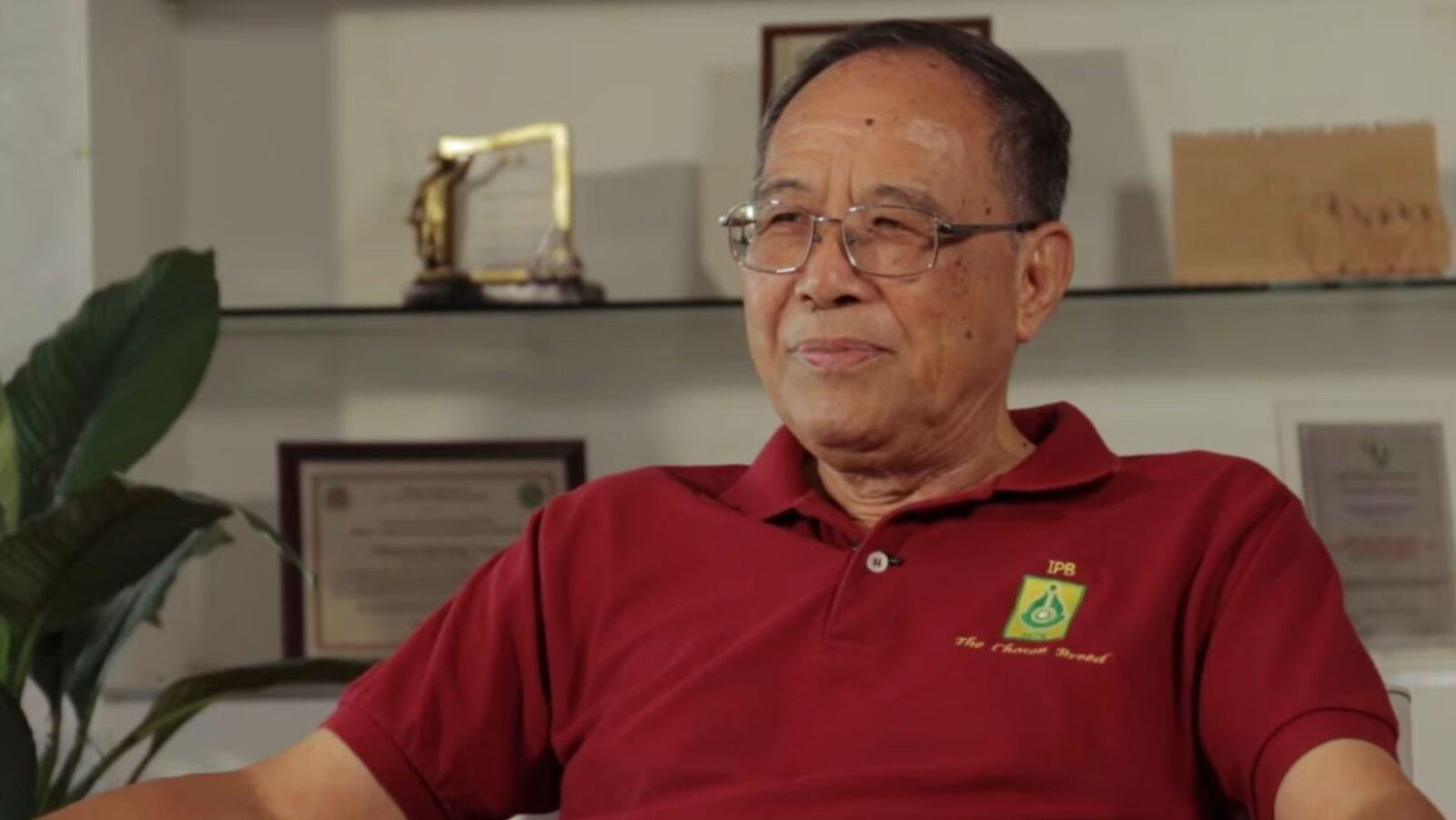
As a country whose roots run deep within the agricultural sector, the Philippines highly values the staple crops that sustain the tables of the Filipinos. For instance, based on 2023 projections from the United States Department of Agriculture (USDA)’s “Grain: World Markets and Trade” report, each Filipino is expected to have consumed around 151.3 kilograms of rice by the end of 2024. With this natural inclination towards rice and other relevant crops, it is no wonder that continuous research for the improvement of crop yield and quality has been established throughout the years — and few have contributed to the Philippine agricultural landscape quite like National Scientist Dr. Dioscoro Umali.
Germinating success
Born on November 17, 1917, Dr. Umali grew up in Biñan, Laguna, together with his brother. Even at a young age, he proved his determination and excellence as he completed his secondary education in Manila alongside a heavy load of extracurricular activities.
Although he initially wanted to follow the steps of his father, a merchant marine, Dr. Umali entered University of the Philippines College of Agriculture (UPCA, now known as UP Los Baños or UPLB) and completed a degree in Agriculture in 1939. He finished his doctorate in Genetics and Plant Breeding at Cornell University by 1949, a feat that he accomplished within less than three years of entering the institution as a University Fellow.
Throughout his career as a researcher, Dr. Umali focused mainly on the research and development of rice, corn, abaca (Manila hemp), and Mussaenda breeding. With his colleagues and students at UPCA, Dr. Umali worked immensely to produce food grains, fruits, and legumes with stronger disease resistance and higher-quality varieties.
Growing agriculture in the country
Dr. Umali and his team started with the breeding of abaca by identifying relatives resistant to notable plant diseases like abaca bunchy top and mosaic viruses. Through cross-breeding abaca with its relatives, they successfully produced hybrids with resistance against the bunchy top virus. These abaca hybrids also served as significant starting materials for the national abaca breeding program up to date.
Furthermore, Dr. Umali developed 14 superior rice varieties and five corn hybrids that are well-adapted to the climate conditions of the Philippines. His other works also include the production of several Mussaenda philippica (Doñas) varieties, a flowering plant species native to the Philippines.
The Division of Plant Breeding, founded by Dr. Umali, then bloomed into an organization known for its dedicated research on crop varieties and acquired highly valuable grants that funded the national research program for rice and corn. Accordingly, plant breeding sprouted and blossomed into a new science in the Philippines. With his immense contributions to the scientific community, he came to be recognized as the “Father of Philippine Plant Breeding.”
The devotion and success of Dr. Umali to agriculture are also rooted in his compassion for Filipino farmers. With the welfare of the farmers in mind, Dr. Umali and his students performed basic studies on the seed dormancy of rice and its nature of germination. Through his research, he also took note of issues — and solutions — in enhancing the recovery rate of rice mills in the Philippines.
Planting his visions
Under his leadership as UPCA dean from 1959 to 1969, Dr. Umali led the 5-Year Development Program, which aimed to build 13 buildings and improve the quality of education. To pursue this infrastructure establishment and the upgrade of the facilities and instructors, an educational loan from the World Bank amounting to 6 million USD, revolutionized UPCA into a leading college of agriculture, both in the Philippines and in Southeast Asia. In an interview with GMA News Online, UPLB professor Janet Reguindin stated that Dr. Umali was one of UPCA’s most well-known deans. She also shared that the DL Umali Laboratory Hall of the Southeast Asian Regional Center for Graduate Study and Research in Agriculture (SEARCA) and the DL Umali Hall of the International Rice Research Institute (IRRI) — two organizations that were created during his decade-long term — were named in his honor.
Dr. Umali also served as the Vice President for Agriculture and Forestry Affairs and became the Vice President of UPLB later on. Additionally, he was appointed as the Assistant Director General and the Regional Representative for the Asia-Pacific United Nations Food and Agriculture Organization in 1971, the first Filipino to do so.
In 1986, Dr. Umali was awarded as a National Scientist in recognition of his significant contributions to agriculture. He too, served as the second president of the National Academy of Science and Technology from 1989 to 1992. As the president, Dr. Umali emphasized the need to address issues revolving around climate change, as well as encouraged disaster preparedness and waste management. In the Philippines and internationally, Dr. Umali received numerous awards and recognition for his work, including the Presidential Award in 1969 and the Outstanding Filipino Award from the Philippine Jaycee Senate in 1992.
On July 1, 1992, Dr. Umali (or DLU, as he came to be known by many) passed away due to a heart attack. However, with his pioneering and revolutionary works in the agricultural sector, his brilliance and legacy are forever planted firmly in Philippine science history.—MF
References
- https://mb.com.ph/2024/2/9/usda-filipinos-rice-consumption-expected-to-rise-anew
- https://apps.fas.usda.gov/psdonline/circulars/grain.pdf
- https://transactions.nast.ph/wp-content/uploads/2023/01/TNP-2022_NS-DL-Umali_Biography.pdf
- https://members.nast.ph/index.php/list-of-national-scientist/details/3/37#honors-and-awards-received
- https://www.philrice.gov.ph/ricelytics/consumption
- https://spheres.dost.gov.ph/profiles/1210-dioscoro-l-umali
- https://www.gmanetwork.com/news/topstories/ulatfilipino/263325/dioscoro-umali-tinaguriang-ama-ng-plant-breeding-sa-pilipinas/story/
- Tecson-Mendoza, E. (2017) Biosketches: Filipino Trailblazers in Science and Technology. Taguig, Philippines. National Academy of Science and Technology Philippines.
- Bernardo, F. (2007) “Ch. 11–12”. Centennial Panorama: Pictorial History of UPLB. Los Baños, Laguna: University of the Philippines Los Baños Alumni Association. pp. 161–186.









